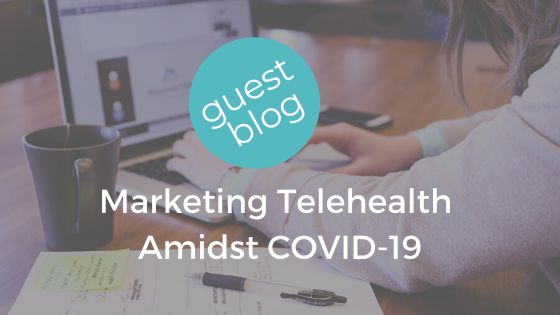G.E.T. a Clearer Telehealth Connection
Our connection got lost on October 15th. The weather outside in Chapel Hill, NC began to feel like it’d officially changed from Summer to Autumn. I was in the middle of a telehealth EMDR (Eye Movement Desensitization Reprocessing) Therapy session doing trauma work with one of my millennial clients, “Janet.”
All of a sudden the screen froze and we lost our connection. I waited about 30 seconds and then saw that Janet had closed her screen. Then she reappeared in my portal waiting room within a minute. During the time we’d lost our (internet) connection, I was not worried about the progress of the therapy. I knew that even with the (albeit short) disconnect, Janet and I were still connected. How did I know that?
I knew I’d put in the work to make sure I’d been attending to Janet in an attuned way. Despite all the ways in which millennials and Gen X, Y, Z-ers are growing up with and are drawn to technology, they still respond to attention. And the way I convey that attuned attention to my clients is to G.E.T. them.
I G.E.T. connected to my clients by attending to three things: Gaze, Emotions, & Touch.
Gaze: The Eyes Have It
Our gaze—our look—stems from what our eyes are doing as we interact with our clients. However, sometimes, it is easy to not be aware of our disposition and what our countenance looks like to our clients. Much of my awareness of my own countenance and disposition stems from my mom. You see, my mom had a “look.” I used to call it her Jamaican stare. When I’d see it, I “just knew.”
You know that “look”—all moms have it. It’s the one that stops all conversation—all connection—and clearly indicates that that’s to be “the end” of whatever it was that was just occurring. That “look” has an uncanny way of peering right through you. It can cut straight to your heart, deflate your balloon, or make you question your simplest decisions.
My mom’s looks were often accompanied by an undercurrent of criticism and comments that put ice on our connection when I was growing up. However, that “look” came from the same set of maternal eyes that looked at looked at me on the day I was born, connected with me, and welcomed me into the world.
As I grew from infancy into my middle-school years, I often wondered how my mom’s “look” could change so often. The discrepancy between her “look” and her beautiful brown eyes confused me and caused me to emotionally cut off connecting with her by the time I went off to college. Because of that personal experience, my response was to make sure I did differently with others, including my clients.
As mental health clinicians, we’ve learned about and know the importance of observation – being on the outside looking in. Our “look” is to be one of genuine curiosity, welcome, interest in, and (hopefully) full acceptance of our clients and where they are with their pain. Our clients can tell how much we get them from the gaze emanating from our eyes.
The Technology Eye Patch Can Make Us Myopic
When I initially began providing telehealth therapy, I had to come to terms with the camera offset effect. The offset effect is:
• where you look into your camera but cannot “see” your client’s face in the moment.
• that “delay” that can occur when you see your client “looking” at you on their screen, but they’re not looking at you in the moment
Research shows that eye contact deepens the connection between two people. The dilemma in telehealth therapy is how to establish meaningful eye contact. The whole interaction can either be a test to the therapeutic interpersonal dynamics or a new dance that is learned on the screen by both clinician and client. But as the clinician, you have to take the lead.
How? By knowing:
• the timing of the dialogue’s flow: note if there is any time-delay in video transmission; notice any the frequency and time spent looking at the camera and looking at the screen.
• where you want to guide your emphasis of “movement” in the conversation. This would entail knowing what your countenance will look like when you want to convey compassion, empathy, directness, etc. and then trusting that your “look” into the camera for however many seconds will underscore your intent.
• the timing of your client’s responses. Observe and determine what his/her typical responses are and how long they last. Also note the length of their pauses in dialogue and gaze.
As you take the lead in the dance, you will learn the rhythm of your telehealth therapy session’s flow.
Emotions: Got Body?
As mental health clinicians, we are trained to attend to our clients by observing them. Telehealth therapy can intrinsically aid us in this observational task because the camera focuses us on our clients from the shoulders up. This means that any emotions our client have may come across their face. And while our clients’ face may convey a myriad emotions and microaggressions, it is not the only place where emotions reside.
Clients Have A Body Of Emotions
So, it is important for clinicians to have ethical ways to check-in with their clients about what’s going on in the rest of their client’s body. This can be accomplished just by asking, “So what’s happening now in your body as you’re talking about this?” The information can also be gathered by educating your clients about mind-body connection and training them to self-monitor and report what is going on even before you ask them. This is one of the many reasons I like therapy approaches (e.g. EMDR or Somatic Experiencing) and why I think that (for certain issues) online therapy using EMDR works well.
Touch: You’ve Gotta Have The Touch…Of Words
The 1987 AT&T TV commercial campaign, “Reach Out And Touch Someone,” honed in on the fact that connection happens with being known through the use of words through a telephone. The “son at college calling mom at home” scene depicted how expressing words was just as important as receiving them. Now, with concerns about HIPAA, confidentiality, and effectiveness of care over the internet, it can be easy to lose sight of how our words can create connection with online clients.
At times, during in-person therapy, it can be easy to rely on what’s not communicated –the “unspoken” stuff – to inform us about what is going on with a client. Connection can come in the form a “vibe” or “feeling” we have during a face-to-face interaction. However, with online therapy, the dynamics of human interaction have another layer of space through which to work. And the best way to work through that space of human interaction is through our words.
The AT&T TV commercial conveyed how words can reach out and touch someone when we:
• hear what’s been said in the context of what’s going on with our clients
• ask questions
• speak from the heart
Words, appropriately delivered in tone and timing, are able to touch our clients in impactful ways that cut to the heart and marrow of what is ailing them and provide a healing balm for them to access. This combination of Gaze, Emotions, and Touch is what fosters understanding. Understanding is what will make our online clients, especially millennials, feel that we G.E.T. them.
About the Author
Dr. Michelle Deering helps mothers and daughters get clarity about themselves so that connect more intentionally and improve relationally with each other. In 2018, her book What Mothers Never Tell Their Daughters: 5 Keys To Building Trust, Restoring Connection, & Strengthening Relationships:
❖ Debuted in the Top 5 of Amazon’s New Releases
❖ Garnered the prestigious Author Academy Award nomination in general fiction
❖ Became a best-seller!
As a North Carolina & New Jersey state-licensed clinical psychologist and board-certified sport psychologist, Dr. Deering has guest blogged for Parent Magazine and been a featured guest interviewee on numerous podcasts, radio shows, and online magazines. A graduate of Brown University, Dr. Deering is the founder and CEO of Curative Connections, a consulting company offering mother-daughter relationship consultation and motivational/keynote speaking services. Michelle and her husband, Scott, compete in Reebok Spartan obstacle course races. She is also a drummer and curler. Married 26 years, Michelle and Scott are the parents of young adult twin daughters. You can learn more about Dr. Deering through her website or by reaching out to her via email. Download this free PDF (“How To Get Her To Talk”) as a resource for your clinical clients, and follow Dr. Deering on Facebook!







